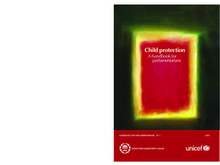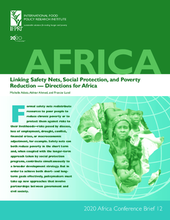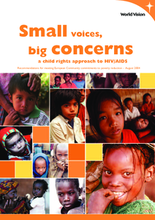Displaying 361 - 370 of 413
Analyzes the state of institutional care in Zimbabwe against the national child protection policy. Focuses on the role of donors in the proliferation of institutional care and strategies to better regulate the development and provision of child protection services.
Discusses the interplay between informal and formal safety net mechanisms in supporting orphans and children made vulnerable by HIV/AIDS. Includes recommendations for strengthening traditional family and community safety nets weakened by the epidemic.
A handbook that includes examples of the many ways in which Parliaments and their members around the world have responded to the challenges of child protection through laws, policies, advocacy and other means. It also describes how Parliaments and their members can gain a clearer understanding of what their contribution can be, and equips them with the knowledge and tools they require to make that contribution.
A short discussion of various safety net program options and considerations for effective program design. Focus on reducing poverty in sub-Saharan Africa
Outlines how a child rights approach can be used to strengthen policy implementation and provides recommendations as to how the EU institutions can move forward in implementing commitments to OVC.
This brief outlines Monitoring and Evaluation sound practices of “spot checking” when costs can be prohibitive and the use of “station days”, a participatory method to collect accurate data on children.
Brief summary of the role of informal, institutional and child-headed households as a result of the AIDS epidemic. Includes general standards by which to implement good practices in child care.
Outlines key findings of survey conducted to investigate the challenges faced by households caring for OVC in South Africa. Conclusion delineates six potential responses to community needs.
Monitoring and Evaluation and Operations Research guidelines for organizations implementing OVC/Children Affected by AIDS programs.
A brief fact sheet on the multilevel support needs of children without parental care. Includes a brief section on statistical data and examples of UNICEF action in several countries around the world.









